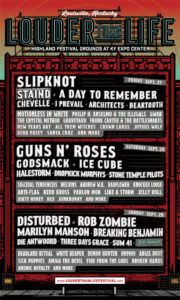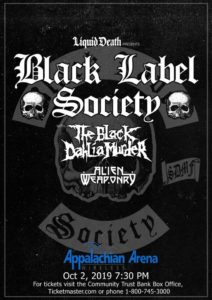7 Most Unusual Rock Music Genres
The times we’re living in can in all seriousness be considered the Golden Age of rock music. In the past, someone who had a specific musical talent could be regarded as a shaman and treated accordingly. It was even worse in the Middle Ages when musicians performing snappy music risked being burnt alive by the Inquisition. Rock music with catchy guitar riffs, powerful bass lines, rapid-fire drums, and expressive vocals is divided into a lot of genres – from light Dance Rock & Roll to aggressive Death Metal and Grindcore. To be able to appreciate all of them, you can buy college papers and rid yourself of one more academic headache.
Many interesting trends in rock music appeared in the late 20th century. Some of them were quickly forgotten, while others were cherished by die-hard music fans. Other genres were further developed and attracted new fans among the new generation of rock enthusiasts.
Let’s take a look at some of the most unusual rock music styles which you probably never knew existed. Maybe this kind of music is exactly what you need.
1. Neo-Psychedelic Rock
Psychedelic Rock emerged in the UK and Western United States in the 1960s. Back then, young people who were strongly influenced by the hippie movement and Indian philosophy used their songs to protest against the Vietnam War and all kinds of social injustice. Initially, Psychedelic Rock was not associated with the use of drugs, its purpose being to create a transcendental state of mind. However, very soon, young musicians began to use mescaline and LSD to come up with deeply philosophical lyrics. Psychedelic rock was characterized by extended solo parts of leading instruments, various acoustic effects, and unusual harmony, which helped the listeners fall into a trance-like state.
Back then, psychedelic motifs could be found in the music played by Jimi Hendrix, Syd Barrett (Pink Floyd), and John Lennon (The Beatles). This genre had a great influence on the Cream, the Rolling Stones, the Animals, The Doors, and many other rock bands. It is believed that some Post Punk bands such as Nirvana, Echo & the Bunnymen, and The Teardrop Explodes started to revive Psychedelic Rock. Neo-Psychedelic rock re-emerged in the early 21st century due to the efforts of the new generation of artists, such as Empire of the Sun, Yeasayer, and Tame Impala. You can listen to the Time to Pretend song by MGMT to better understand what this music is all about.
2. Shoegazing
The term was coined by two British journalists working for the NME and Melody Maker music magazines. They used it to call a specific manner in which some musicians performed on stage. Instead of putting on impressive shows and whipping up the crowd with energetic movements, they behaved passively and apathetically. In fact, they did not interact with the audience at all, preferring to stare at the floor instead. Because of that, everybody got the impression they were looking at their shoes whereas in actual fact they were trying to invent new sound effects.
This kind of music is based on Noise Rock with elements of Dream Pop. The sound is thunderous and hard, with powerful echo effects, long buzzing riffs, and lots of distortions. All this creates the so-called “wall of sound” in which both vocal and melody are fused. Many guitar parts are superimposed on one another, thus making distinguishing particular instruments impossible.
The genre was influenced by such famous groups as The Jesus & Mary Chain, Cocteau Twins, Sonic Youth, and the early The Cure. Shoegazing didn’t really catch anywhere outside Great Britain. It began to disappear in the mid-1990s, gradually giving way to Grunge and Britpop. Then, all of a sudden, it became popular again. One of its most famous representatives is a British band called The Verve. Their Bitter Sweet Symphony song topped the charts across the globe in the early 2000s.
3. Christian Black Metal
Many people believe that Black Metal is a satanic genre of rock music. To back up their claim, they cite the fact that many BM performers like to include dark motifs and cuss words in their lyrics. They also enjoy taking on a demonic appearance and using gloomy sounds and lyrics. The very name Christian Black Metal is highly controversial because it hurts the religious feelings of Christian believers.
With its guttural, reverberating guitar sounds, and dynamic rhythm, Christian Black Metal is very similar to ordinary Metal Rock. The only nice thing about this genre is that the vocalists can occasionally call Jesus a cool guy. Perhaps, the bands that play this kind of music are trying to convey their opinion about Christianity to the public. Some performers of Christian Black Metal claim that by doing all those nasty things they oppose satanism and paganism in some rock songs. Typical representatives of Christian Black Metal include Crimson Moonlight, Mayhem, Horde, and Frost Like Ashes.
4. Pirate Metal
The Pirate Metal style is typically used by Metal Rock bands. They usually dress up like filibusters and their lyrics and music are permeated with pirate motifs. Most of them play Folk Metal, Power Metal or energetic Heavy Metal music based on pirate motifs. Running Wild were the first to use a pirate theme but they expressed it exclusively in their lyrics and the design of their albums.
Very often, bands that play this kind of music, as well as their fans, come to concerts dressed like filibusters. Perhaps, they protest against illegal downloading of their songs this way? Alestorm is the most famous Pirate Metal group today.
5. Wizard Rock
Have you ever heard about Wizard Rock? It first became popular in Massachusetts in 2002. It was further popularized by the Harry and The Potters band which sang songs about Harry Potter and everything to do with him. The group released two albums and toured a lot. Later on, the same image was exploited by Draco and the Malfoys, The Whomping Willows, and many other bands. At the moment, about 750 bands perform in this genre, but, of course, not all of them are popular.
At first glance, Wizard Rock has a lot in common with Pirate Metal. The only difference is that Harry Potter replaced Long John Silver and a magic wand is used instead of a cutlass. In fact, Magic Rock is much weirder than the pirate-inspired music. A pirate party during which rhythmic Heavy Metal songs are performed differs a lot from a gathering of nerds waving magic wands, listening to Indie Rock, and singing about Hogwarts.
The drawback of this genre is that about 99% of the songs are dedicated to Harry Potter’s adventures. It is clear that nobody wants to sing about Gollum but Wizard Rock musicians could come up with a couple of songs about Gandalf, for instance.
6. Noise Rock or Noise Punk
This style of rock music is often referred to as experimental. Noise Rock originated in the 1980s and was a mixture of Punk and early Industrial Rock. Sometimes, this genre is called Noisecore. Most of the Noise Rock musicians used badly tuned electric guitars to produce deafening sounds. The genre is also characterized by atonality, improvisations, and an unconventional song structure.
It was much influenced by The Velvet Underground, Captain Beefheart, The Stooges, and David Bowie. The symbol of Noise Rock is the Sonic Youth band which managed to make their songs recognizable in the late 1980s. The main feature of the band was that they relied on sounds created by electric guitars and amplifiers.
Pixies, Sonic Youth, Swans, The Birthday Party, and Flipper can also be considered typical representatives of classic Noise Rock. Most of the Noise Rock musicians focused on producing more melodic sounds, thus remaining outside the mainstream rock music. The Liars from New York, Deerhoof from San Francisco, and many other bands continued to play and compose songs in this genre.
7. Math Rock
It is believed that Math Rock originated from Noise Rock. This genre of rock music emerged in the US in the late 1980s. It is characterized by complex rhythmic sounds, as well as disharmonious guitar riffs. If 4/4 timing is the most common in the rock songs, the atypical musical times, such as 7/8, 11/8, and 13/8 are most often used in Math Rock. A Math Rock composition may have alternating timings, too. In fact, the genre got its name due to its rhythmic complexity which seemed almost “mathematical” to many music listeners and critics.
In Math Rock, lyrics are generally of minor importance. The voice of the frontman is considered only as additional sound effect or instrument. Also, many bands belonging to this style perform solely instrumental music. Many rock bands of the 1970s and 1980s, such as Genesis, Gentle Giant, Rush, King Crimson, and Pink Floyd, experimented with unusual timings but they were usually considered Progressive Rock bands. According to some music critics, NoMeansNo, a Canadian Punk Rock band, was the first Math Rock band in history.
To sum up, despite the diversity of rock music styles, all of them have something in common. This music unites like-minded people and gives them an opportunity for self-expression.









